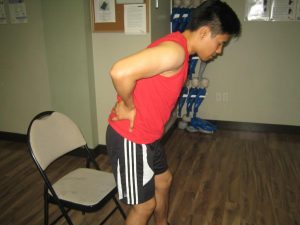A pressure ulcer involves damage to a section of skin and tissue beneath it from continuous pressure on the skin. The ulcer might be small or grow large over time.
https://www.youtube.com/watch?v=RrnU318YxKE
A pressure ulcer might form if lying in bed or sitting in a chair for prolonged periods without changing position. It is also caused by friction or rubbing on the skin. The ulcers typically form on the tailbone, ankle, sides of the hip joint, upper part of the pelvis, elbow, knee and back part of the heel.
The continuous pressure on the skin crushes and closes the miniature blood vessels that normally provide nutrients and oxygen to the skin. Once a section of skin does not receive enough oxygen and nutrients, the skin might die, and an ulcer develops.
What are the signs?

The signs of a pressure ulcer typically develop as phases:
- Stage 1 – reddened or darkened section of skin form and does not subside within 30 minutes after changing position to place less pressure on the site
- Stage 2 – the skin cracks open, peels or blisters
- Stage 3 – the skin opens and might drain or ooze. The sore is completely through the skin and starts to turn into a deep sore and some yellow tissue can be seen.
- Stage 4 – a deep sore forms where muscle is visible as well as bone
Management of a pressure ulcer
The treatment for a pressure ulcer is based on its severity. The ulcers require immediate and ongoing care in the initial phases to prevent further damage and infection.
Some of the measures that can be used in managing one include:
- Keep pressure off the affected site.
- The pressure ulcer should be kept clean and protected from urine and bowel movement.
- Avoid massaging the affected area.
- In case the skin is damaged, the doctor will suggest ways to promote healing. Small-sized sores only require a padded dressing and ensuring that any pressure is not placed on the site.
A pressure ulcer might take some time to heal if the entire skin layer is involved. The rate of healing is based on the overall health of the individual as well as home care measures provided and diet.
